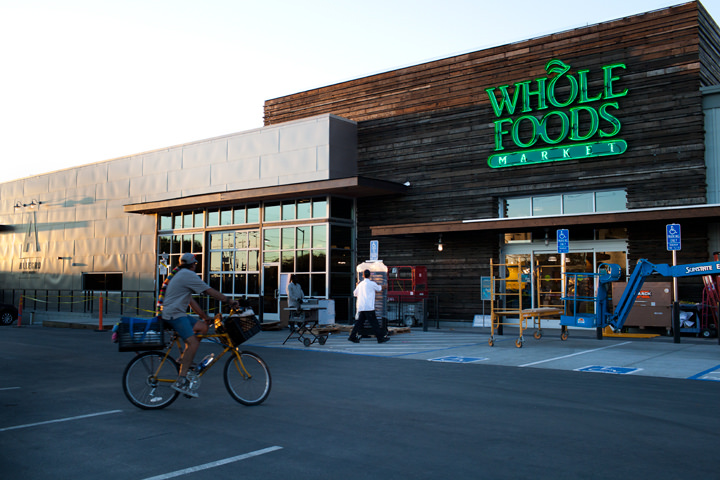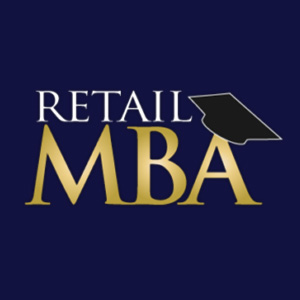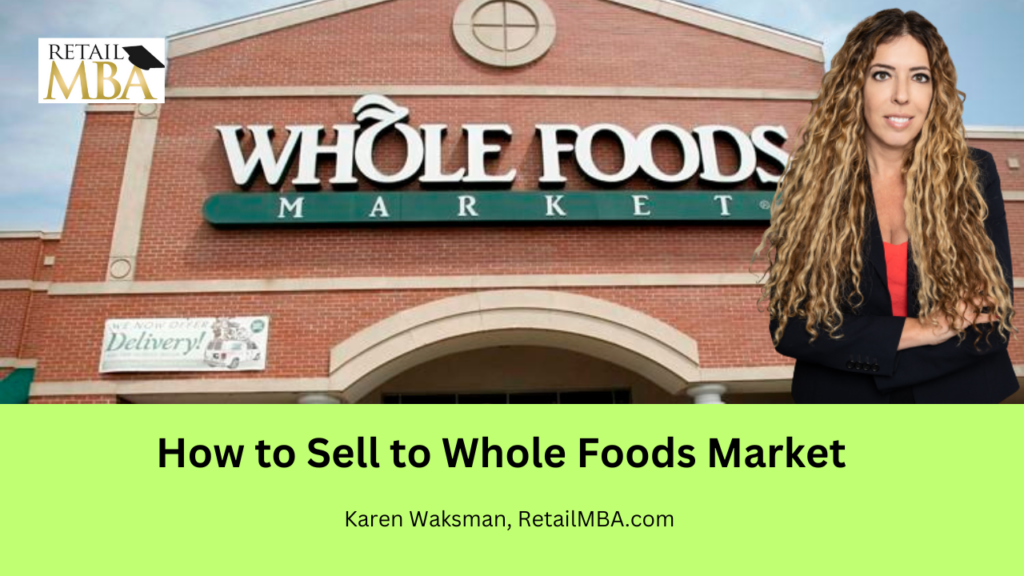Would you like to sell a product to Whole Foods Market?
If you’re interested in selling your products at Whole Foods, Karen Waksman, the founder of Retail MBA has some tips to help you achieve success. In this short video training, Karen discusses the distinctions between retailers and Whole Foods well as strategies for maximizing the opportunity.
Differences between Whole Foods and Major Retailers
When attempting to have your products stocked by retailers like Walgreens or Walmart a single corporate buyer is responsible for making purchasing decisions for all their stores. This implies that if the buyer isn’t impressed with your product it won’t find its way onto their shelves.
In contrast Whole Foods operates on a level. This means that you have the potential to connect with buyers within regions of Whole Foods to get your products in stock. This opens up opportunities to generate revenue since one buyer may not have budget allocated for your product while another buyer in a different region might.
Tips for Selling Your Products at Whole Foods
Reach out to buyers across different regions, within Whole Foods to increase your chances of having your products accepted.
Leverage the advantages offered by the buying system to enhance your likelihood of success.
Consider exploring Retail MBAs training program on getting your products placed in retail stores.Selling your products to Whole Foods presents an opportunity, for achieving success. To maximize your chances it’s beneficial to leverage the buying system. One effective approach is to enroll in Retail MBAs training program, which provides step by step guidance on how to navigate the process of getting your products into retailers, like Whole Foods.
Ten Tips for Selling into Chain Stores Such as Whole Foods Market!
The retail industry places a deal of importance on buyers seeking out new and innovative products. It’s an aspect of their purchasing process. Large stores face competition and their discerning customers constantly seek the greatest items available. Those responsible, for making purchasing decisions for these stores are well aware of this fact on the lookout for offerings to add to their inventory. Fortunately getting your products into chain stores has become increasingly accessible. The key lies in understanding how to present your product in a way that entices the buyer.
As a consulting firm we specialize in assisting brands across product categories. Feel free to explore our work ; [https;//www.retailmba.com](https;//www.retailmba.com)
Contrary to belief you don’t need to be a corporation to sell your products at Whole Foods or similar retailers. In fact most of the companies I’ve worked with throughout my career were just starting out. What truly matters to buyers is finding the product than fixating on the size of your business. If you have a product that they believe will generate revenue, for their operations rest assured that’s all they’ll prioritize.
It doesn’t matter if your company is big or small; what matters is that you have the setup to effectively deliver products to them. I discuss this in my Retail MBA Training and Coaching System which you can find at this link; https;//www.retailmba.com. The important thing to remember is that you don’t need to be a company, in order to sell your products to retailers. I know this because I’ve worked with businesses that were just starting out. I also teach this concept to aspiring entrepreneurs who are just beginning their journey.
3. Your success hinges on how you present your products for Whole Foods.
If I could offer one piece of advice when it comes to selling in stores it would be to prioritize investing time, money and effort into packaging. The reason behind this is that when customers walk into a store they don’t initially focus on the product itself; instead they pay attention to how the product’s packaged. People won’t buy your product solely because its good; the way its presented in its packaging holds importance well. Therefore anyone selling a product needs to ensure that the packaging is top notch since buyers understand that packaging has an impact, on sales. Ultimately this is what buyers truly care about.
Packaging is crucial, for achieving success.
To increase your chances of winning it’s important to conduct research and preparation.
Many people underestimate the value of walking into a store and observing the product aisles. In reality by examining what is displayed on store shelves you can gain insights about what buyersre looking to purchase. The store shelves provide a wealth of information from determining the price to understanding how your packaging should be designed. By considering things from the buyers perspective you’ll realize that they have already chosen products from your competitors that are currently stocked in the store. This indicates that they are satisfied with those products in terms of price, packaging and presentation. To learn how to get your products into stores it’s essential to visit stores and conduct thorough research.
When it comes to reaching out to chain stores it is advisable not to contact their desk or rely solely on filling out online forms, like everyone else does.
So when you want to get your products into stores of calling the front desk of a big store it’s better to take a different approach. Than going through the process of filling out paperwork and sending your products, which doesn’t really make you stand out from others I suggest reaching out directly to the buyers themselves. By contacting the buyers and knowing what to say to convince them to buy your products you can bypass the vendor departments. Increase your chances of success. Don’t feel restricted by following rules or chasing after vendor departments; there are methods available. One effective way is to find the name and contact information of the buyer for your product.Many individuals are unaware of the existence of resources where one can acquire the contact information of buyers and determine which buyer is responsible, for product types. There are companies that specialize in selling lists containing buyers names, such as RetailBuyerLists.com serving as an example. In my program I provide a tutorial on how to navigate this process. By examining their contact details you can gain insights into what a buyer’s looking to purchase.
If you have a consumer or store product it’s crucial to locate the buyer who’s interested in your particular product type. Various companies offer access to information. Its imperative that you identify the right buyer for your product. I delve into these details extensively in my program; however it’s essential to bear this in mind.
Furthermore it’s important to maintain interactions, with those who assist buyers at Whole Foods.
What does this statement signify? Well many people are unaware that buyers often begin their careers as buyers. Essentially this indicates that assistant buyers typically progress to become fledged buyers. Therefore all buyers initially start out as assistants before advancing in their roles.
When it comes to buyers many people tend to view them as secretaries or mere assistants. However I strongly disagree with this perception because assistant buyers eventually become buyers themselves. By treating them with kindness and respect you create an opportunity to have your products featured in stores.
I cannot stress enough how times being friendly, towards a buyer has helped me successfully place a product in a store. I stood out from the crowd by recognizing their long term value. I knew that they would eventually make purchasing decisions for products like mine, which made them incredibly valuable. This is why I always prioritize treating buyers well.
Now lets discuss vendor day. Vendor day is an allocated day within a week, month or year when a buyer invites vendors or individuals with products to their office for presentations and pitches. It offers a timeframe around 15 to 30 minutes per seller, where you have the chance to impress and captivate the buyer with your offerings. It’s an opportunity to showcase your goods and make an impression, on the buyer.. That concludes what vendor day entails.
Buyers always engage in this practice because they are constantly seeking innovative products.
In my opinion it is crucial for you to understand that participating in a vendor day event can be an opportunity to connect with a buyer, from a chain store. Personally I have strategies to get my products into stores that don’t necessarily rely on vendor day. I prefer meeting with buyers without the presence of competitors. However, if there are no options I would consider participating in a vendor day event.
Allow me to share a tip on how to secure a meeting with the buyer for the vendor day event; simply reach out to their assistant and express your interest in being part of their next vendor day. The assistant buyer assigned for the vendor day can assist you in scheduling a meeting with the buyer. It’s something considering although there are alternative methods to get products into stores. Personally I typically view vendor day as my resort. Acknowledge its potential, for connecting with buyers.
Again you have a window of about 15 minutes before moving on to the next vendor. Throughout the day this buyer engages with vendors. If they show interest, in your product theres a chance they might make a purchase. Understanding the significance of vendor day is crucial.
9. Importance of quantity
I cannot emphasize enough how times my students have contacted me after pursuing chain stores without realizing the number of stores they need to approach in order to secure that one breakthrough deal. The thing with selling to retailers is that you only require one chain store to give your product a chance place it on their shelves and test its success, for your business landscape to transform. A single substantial retail order that goes smoothly can completely revolutionize your business fortunes. Hence it boils down to numbers; reaching out to chain stores is essential because encountering rejections is inevitable. It’s all part of selling to chain stores; however the positive aspect is that you only need one chain store buyer who believes in your product and sees its potential for you to achieve success.
So always keep in mind that it’s a game of numbers and never lose hope.
If you have confidence, in your product eventually you’ll have the opportunity to see it on store shelves. I’ll guide you through the process step, by step. However it’s important to remember that it’s all a numbers game. You need to reach out to chain stores. All it takes is just one chance. When someone finally gets that one shot their entire life can change for the better. That’s why I find selling to chain stores so fascinating.
10. Persevere and never give up
I understand that the idea of selling your products to retailers may seem overwhelming but let me assure you it’s not as difficult as it appears. It simply requires time, effort, focus and a strong desire to succeed. If you genuinely believe that your product belongs in stores don’t ever give up; keep pushing until you achieve your goal of getting your product onto store shelves. I’ve seen students who tirelessly reached out to buyers—yes it can be disheartening and frustrating—. Then one day they receive a positive response that changes their entire lives for the better. The journey is undoubtedly worthwhile. If I could offer any advice it would be this; keep going no what obstacles come your way.
I really hope that these ten valuable tips I’m sharing with you today will give you a glimpse into the process of getting your products into chain stores. In my Retail MBA program, which you can find at https;//www.retailmba.com I cover everything, from pitching buyers to the step, by step journey of getting your product onto store shelves. Consider this a starting point to kickstart your progress.




